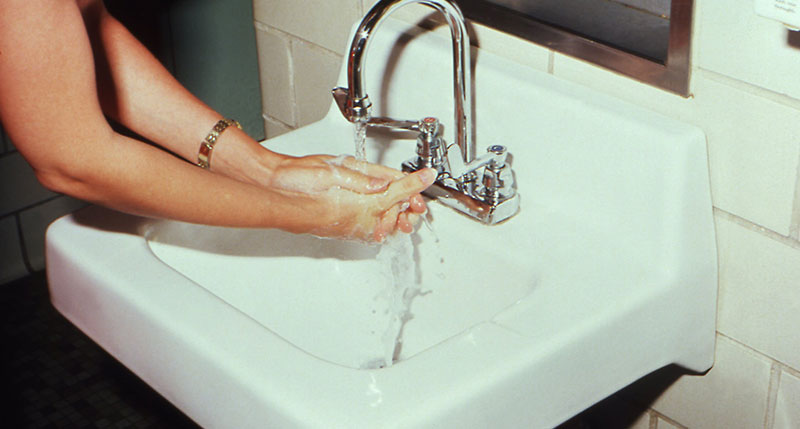Back-to-school can mean back-to-germs. And while you’ve likely coached your kids on proper handwashing techniques this year, it’s also critically important to teach them not to touch their eyes without washing their hands first.
Viruses and bacteria—including the ones that cause conjunctivitis—can live on the common, everyday objects kids touch. These include but are not limited to keyboards, tablets, door handles, grab bars, railings, restroom doors and handles, playground equipment, desks, writing tools and art supplies.
When your student touches one of these objects and then touches their face or eyes, they’re at risk for contracting a virus or bacteria.
Conjunctivitis or “pink eye” as it’s often known, is one of the more common eye infections that school-age kids pass around the classroom and playground. Here’s what it is and how to help your student avoid contracting it.
What is Pink Eye (Conjunctivitis)?
The word conjunctivitis is a combination of the “conjunctiva” and “itis.”
- The conjunctiva is the eye’s mucous membrane. The conjunctiva, a transparent and thin tissue, covers both the front of the eye and inside of your eyelids. Its function is to keep the eye protected and lubricated by producing tears and mucus.
- The suffix “itis” added to the end of a word means a swelling or inflammation of that part of the body. So, for example, laryngitis is a swelling or inflammation of the larynx.
So—conjunctivitis is the swelling or inflammation of the conjunctiva, the thin, transparent tissue that covers the inside of your eye.
What Causes Pink Eye?
When your student gets conjunctivitis, it can be caused by either bacteria or a virus, and it can affect one or both eyes.
Unfortunately, conjunctivitis is highly contagious and spreads very easily from student to student. However, when caught early and treated appropriately, it is typically a minor (though uncomfortable) infection that responds well to treatment. If it’s not caught and treated in a timely manner, it may develop into a more serious condition.
- Bacterial conjunctivitis. The bacterial form of the infection is the result of a strep or staph bacteria infecting the eye. Sometimes this bacteria comes from the person’s respiratory system, for example if they have strep throat. It can also result from contact lenses that aren’t cleaned properly, or from reusing a contact lens case without cleaning it properly. It can jump from person to person if there is physical contact or through sharing contaminated makeup including mascara, eyeshadow or eyeliner.
- Viral conjunctivitis. The viral form of pink eye can be caused by the common cold virus and is highly contagious—just like the common cold. It can spread quickly through coughing, sneezing, or touching the face or eyes with unwashed hands.
- Allergic conjunctivitis. Of the three forms, this is the only non-contagious one. If your student is exposed to chemicals or other allergens that irritate the eye tissues, they can develop conjunctivitis. And while allergic conjunctivitis is irritating to the individual who has it, it is not contagious to others.
What are Conjunctivitis Symptoms?
We call it Pink Eye for a good reason: If you or your student contracts and develops conjunctivitis, the result is an irritated, itchy, pink discoloration of the whites of the eye in one or both eyes.
Following are some of the telltale symptoms of pink eye:
- Itching or burning sensation in the eye (or eyes)
- Discharge or thick puss coming out of the affected eye(s)
- Feeling like a piece of dust or grit is in the eye
- Swollen eyelids
- Weepy eyes, excessive tearing
- Light sensitivity (more than usual)
What’s the Treatment for Conjunctivitis?
If another student in your child’s class gets pink eye, or if you suspect your student may have contracted it, call us immediately to schedule an appointment with your optometrist.
When diagnosed and treated quickly, the condition typically responds very well. When we treat pink eye, we have two goals:
- Ease the discomfort and irritation
- Reduce the length of infection to prevent spreading
If the condition is bacterial in origin, an antibiotic eye drop or ointment is very effective. If the condition is due to a virus, the condition must run its course. Your optometrist will recommend steps to relieve the irritation and painfulness such as cool or warm eye compresses, artificial tears and sometimes even steroid eye drops to combat inflammation.
If your student wears contact lenses, they shouldn’t wear them while they have pink eye. Your optometrist will recommend a contact lens protocol for when the infection clears.
How can you Prevent Conjunctivitis?
- Wash your hands—thoroughly and often.
- Don’t touch the face or eyes with your hands.
- Never share eye drops or eye makeup.
- Use only your own pillowcases, washcloths and towels.
- Never share your contact lenses, cases or solutions with others.
- Wear your safety goggles in places where you’ll be exposed to chemicals.
- Protect eyes on dusty, windy days.
Think you might have pink eye? Call us so your optometrist can properly diagnose the condition and prescribe immediate treatment to help you feel better and prevent complications.

